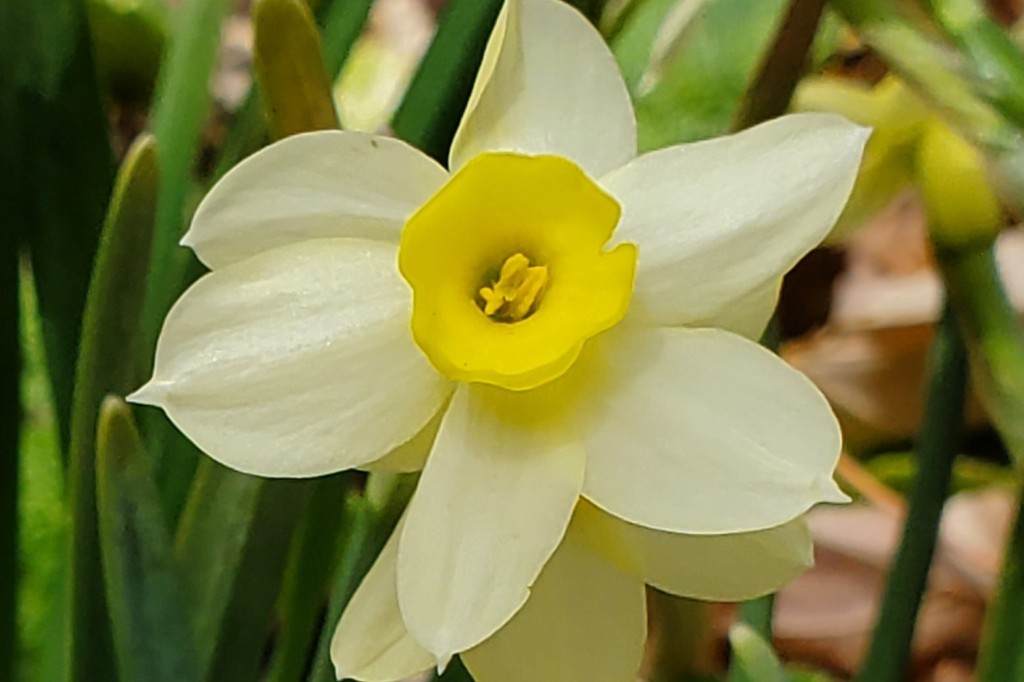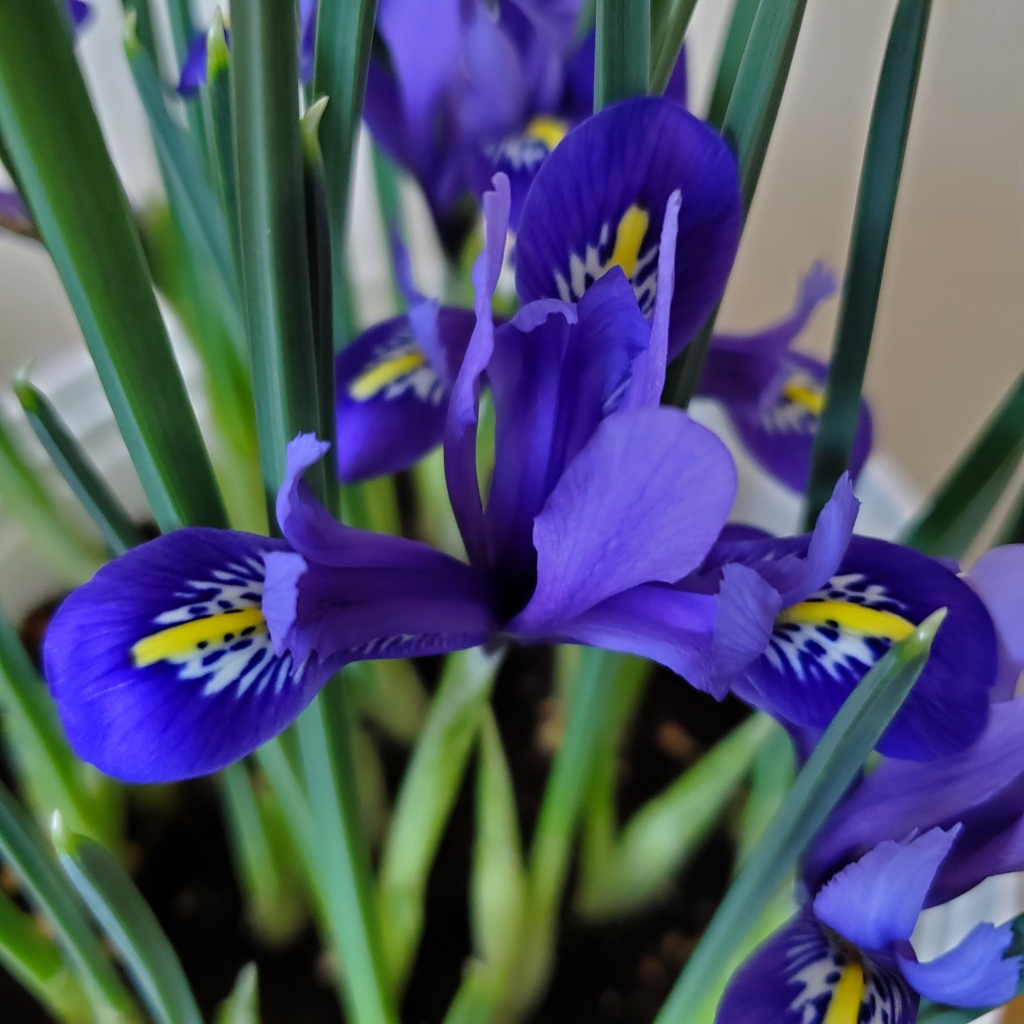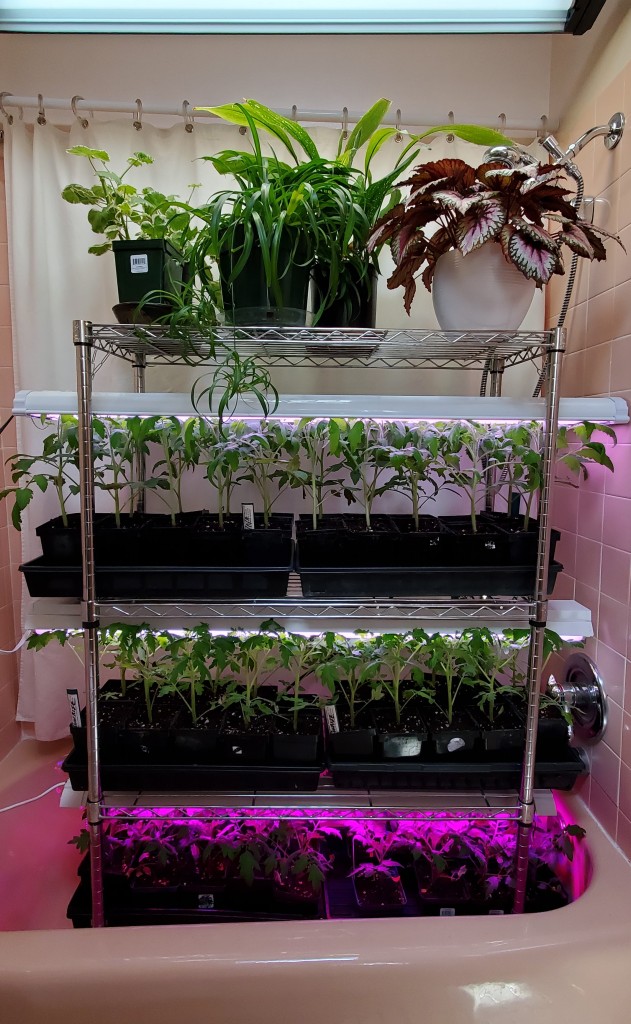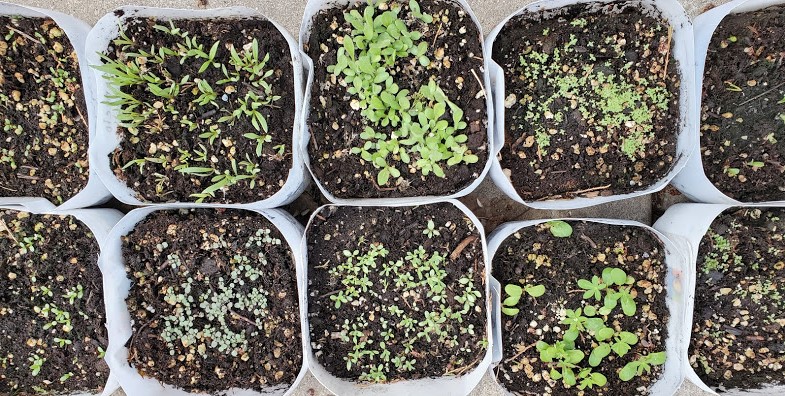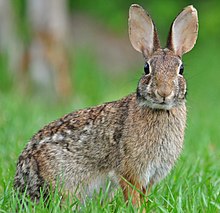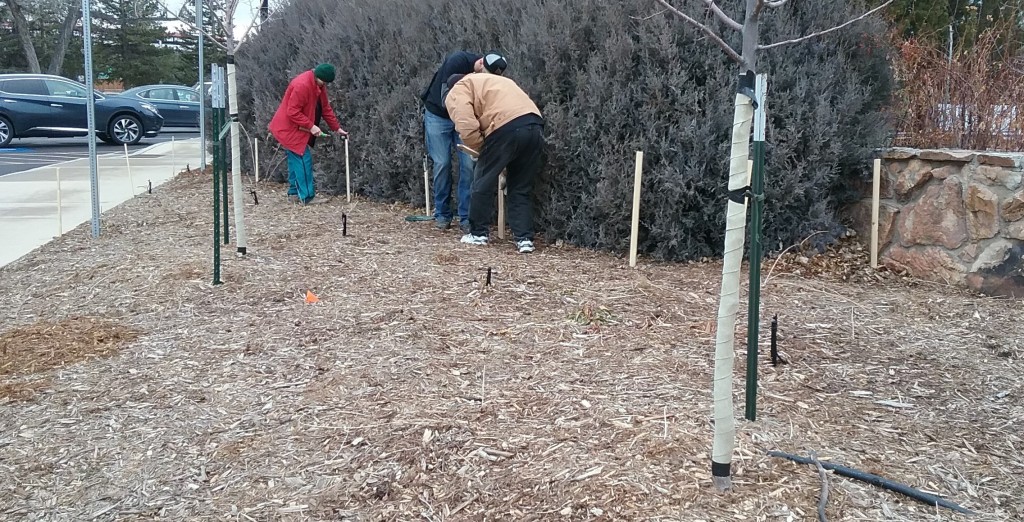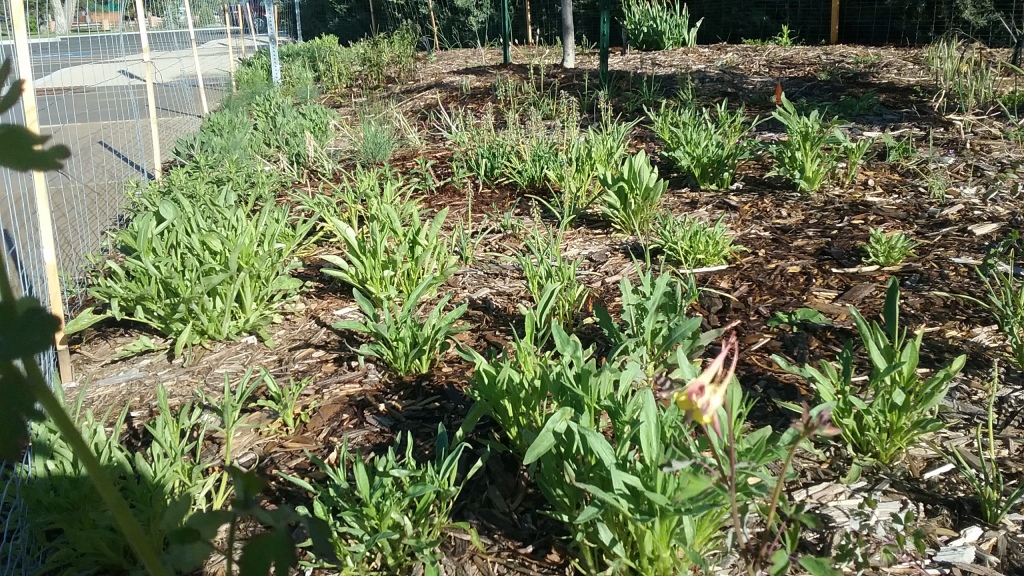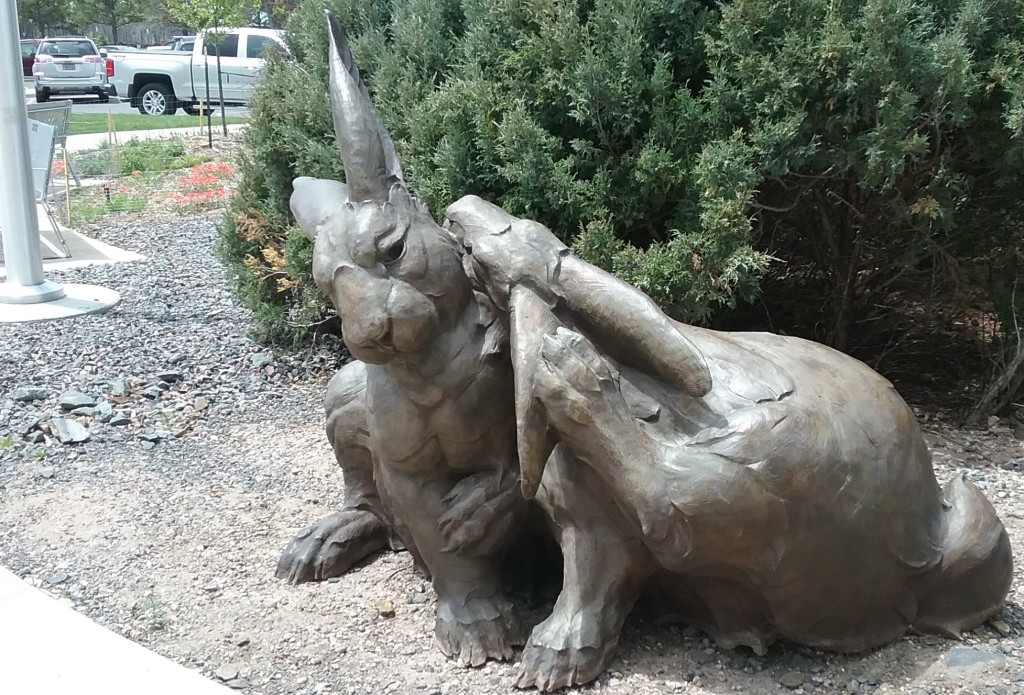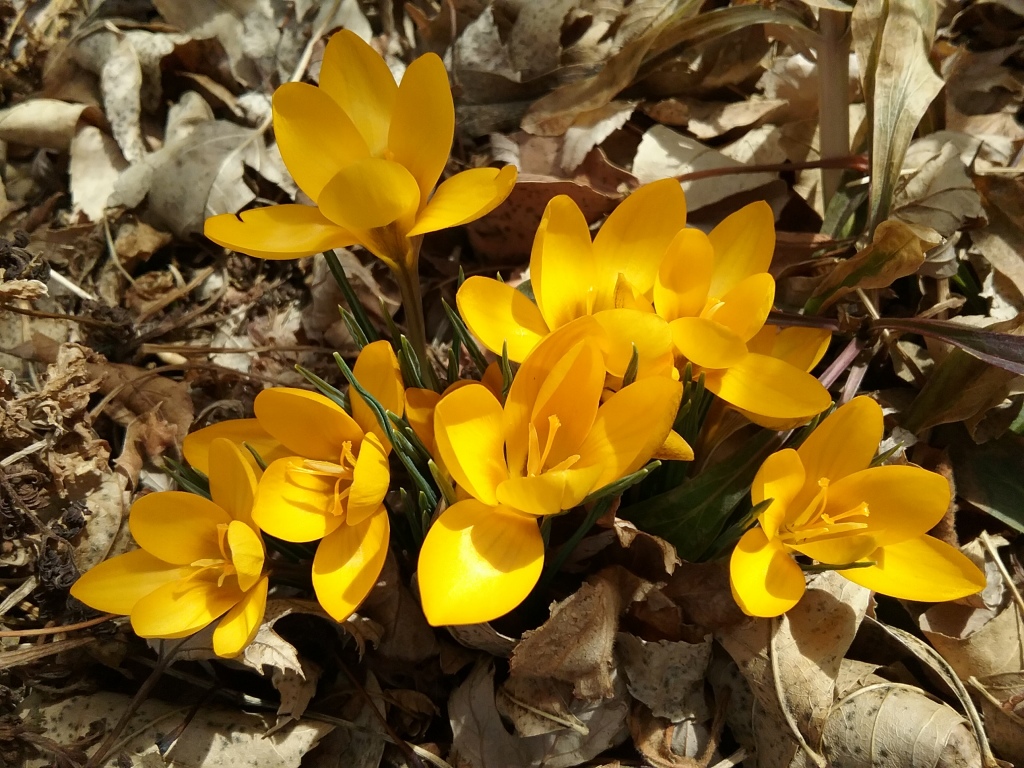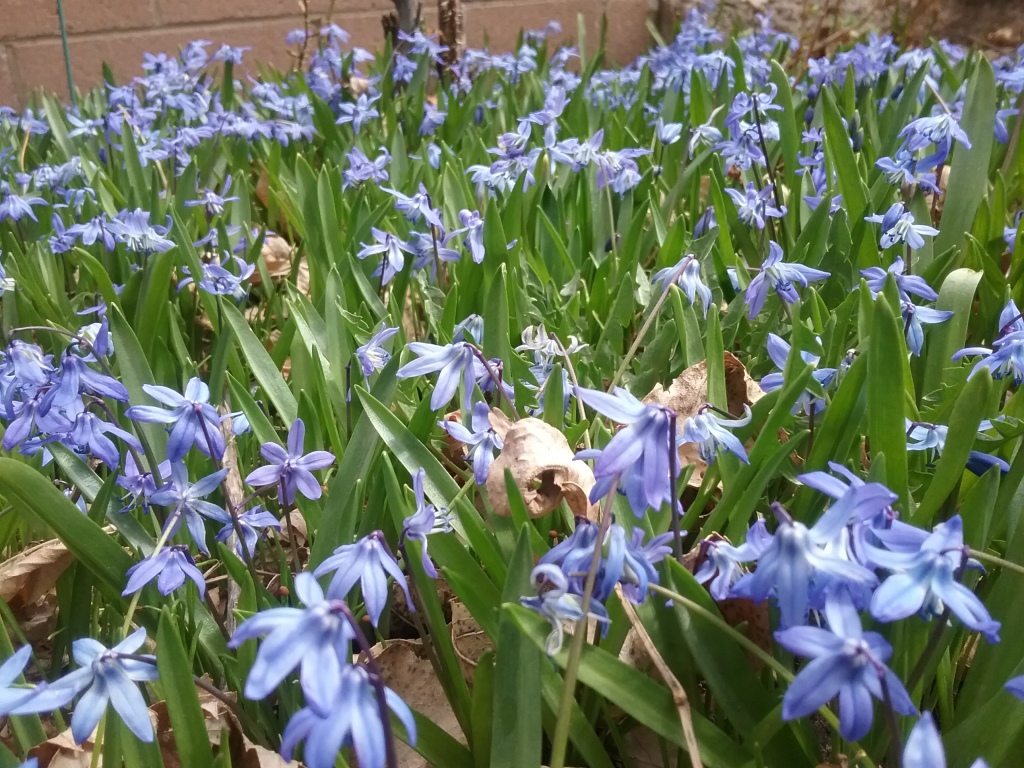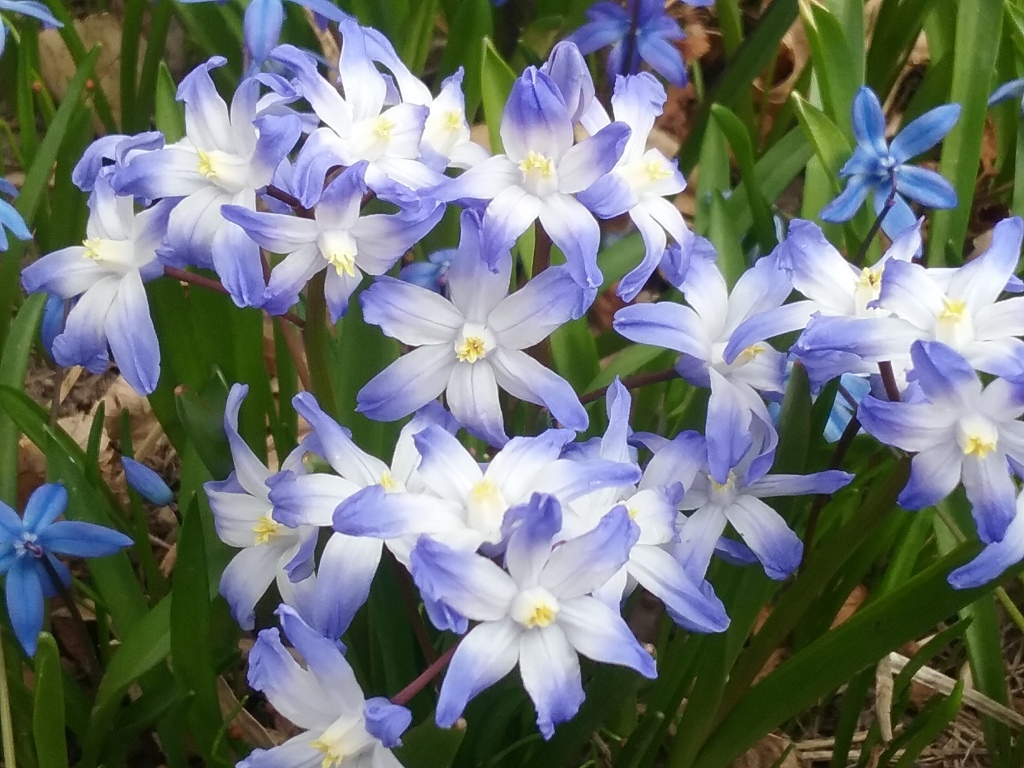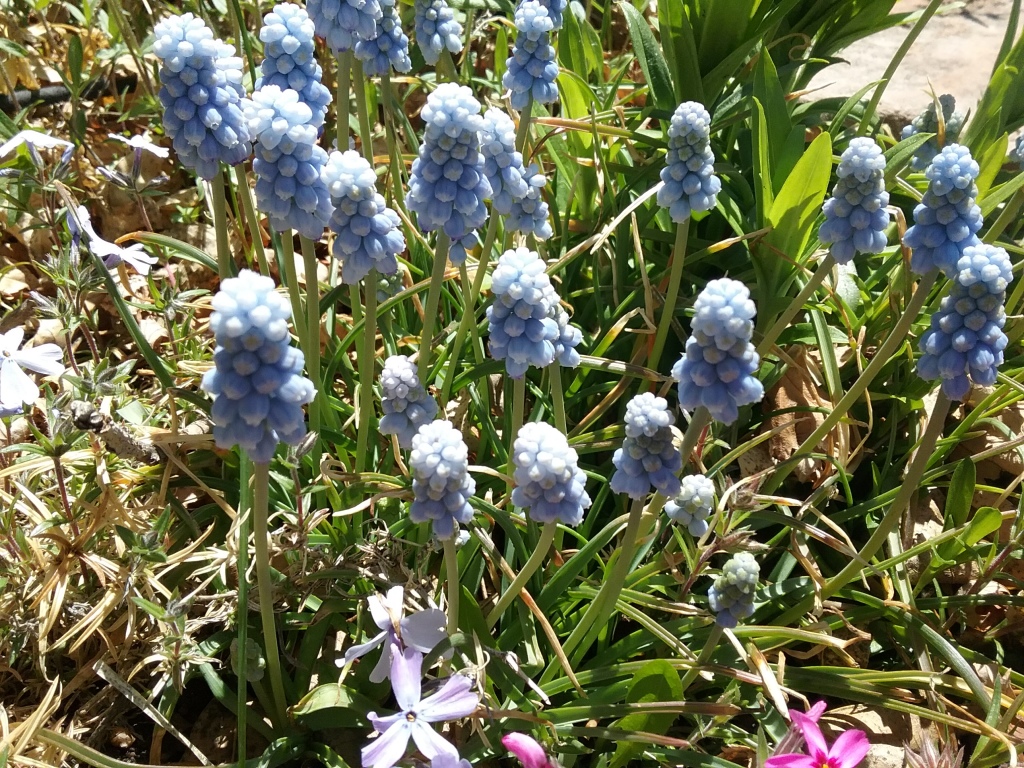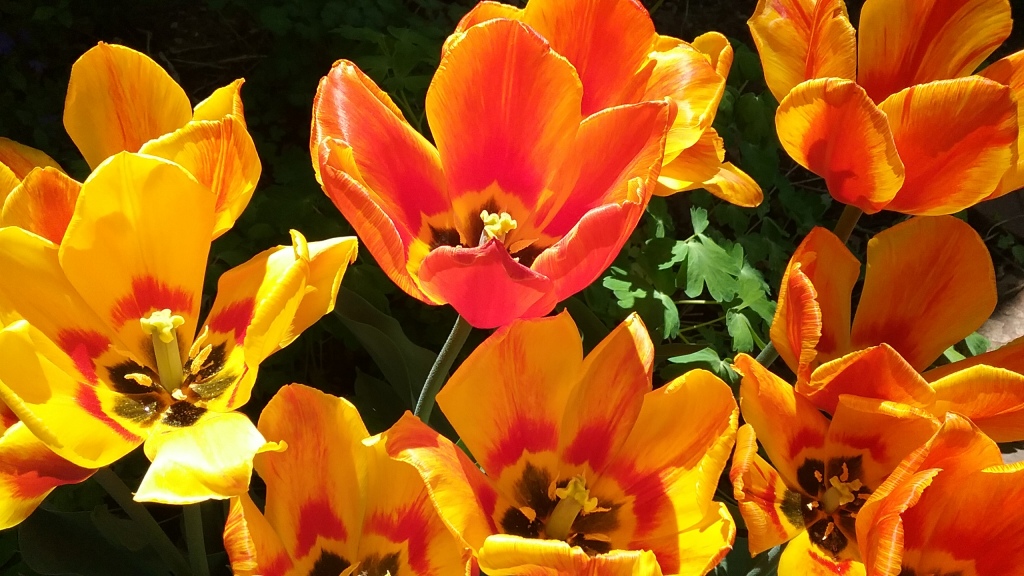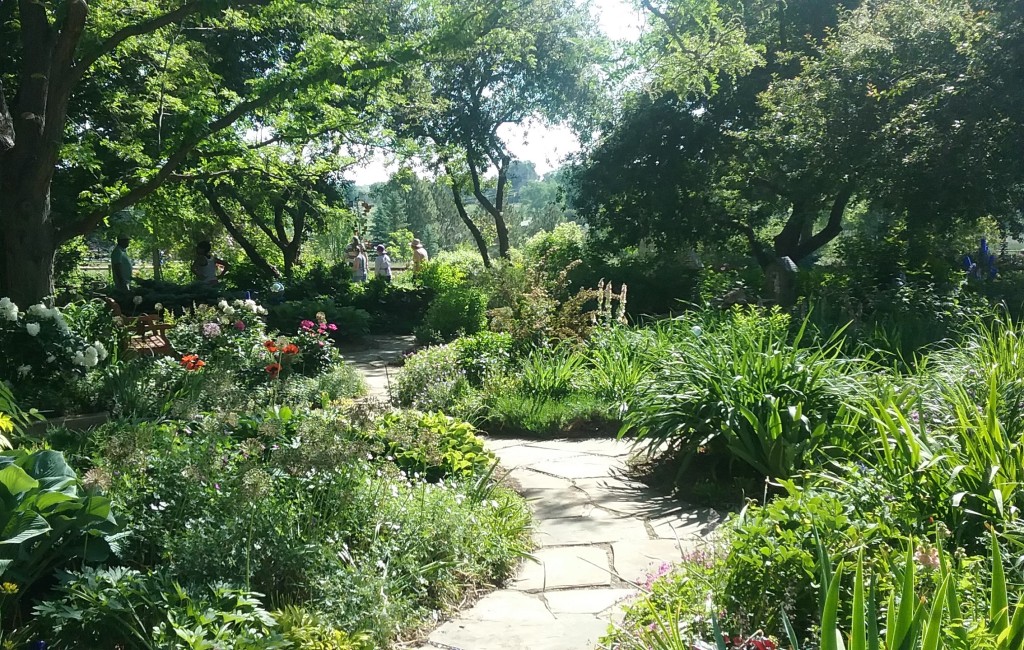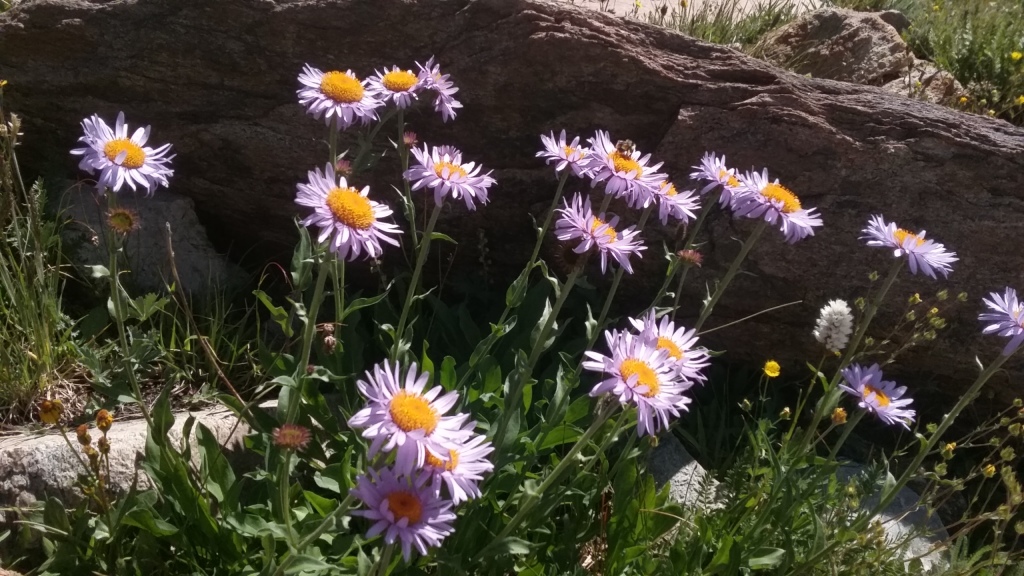Spring in my Habitat Hero garden
Published April 30, 2024, in the Cheyenne Habitat Hero Committee newsletter. To subscribe to the newsletter, send an email to bgorges2 at gmail.com.
By Barb Gorges
Below are three ways I work with my pollinator/native plant garden in spring. Do you have any tips that work for you? Let me know, bgorges2 at gmail.com.
Gardens are works in progress. Each garden bed in your yard is in its own microclimate and soil, plus each of us gets a different mix of wind, temperatures and precipitation to work with each year. And then, the genetics of each seed packet and nursery plant can be different even if they share the same species name. But be optimistic—if your garden can grow weeds, there’s a native plant that can grow there too.

A native bumblebee enjoys a non-native crocus in early April. Photo by Barb Gorges.
Last year’s stems and tree leaves
I can leave last year’s stems uncut only so long in my home Habitat Hero garden. Usually, when the spring bulbs start to bloom, sometimes as early as March here in Cheyenne, I start a little snipping so they can be seen and appreciated better.
Leaving stems in place for the winter helps trap snow moisture and the leaves from our trees which act as winter mulch. But the thicker stems are also potential nesting sites for beneficial insects. This winter I read that the stems are most useful the following year, probably because they become hollower at the right time in the insects’ life cycle. See this article, https://gardenrant.com/2024/04/gardening-pollinators-stem-nesting-bees.html.
I’m not sure I want a lot of dead sticks, 6 to 12 inches tall, all over my garden. But as I snipped here and there through the month of April, I realized that I know how high the greenery grows for my favorite prairie plants (penstemons, Gaillardia, Rudbeckia, Monarda, asters, goldenrods, milkweed). I can cut the stems short enough that new growth will cover them. And maybe the old stems will form a barricade to help keep the rabbits out.
For the part of the stems I cut away, I like the idea of cutting them into little pieces in place, forming mulch—and dropping seed heads that might still have seeds capable of self-seeding. My garden is too small to let everything just fall over. And it’s too lumpy with tulip clumps to mow.
But this year, there are so many tree leaves making the mulch already too thick. I’m going to have to pull a lot of it out (and compost it for the vegetable garden maybe) before spreading my snips of last year’s plants so that new growth isn’t smothered. Later, when summer heats up, and self-seeding sprouts are tall enough, I may replace some of the leaf mulch around them and keep the soil from drying out.
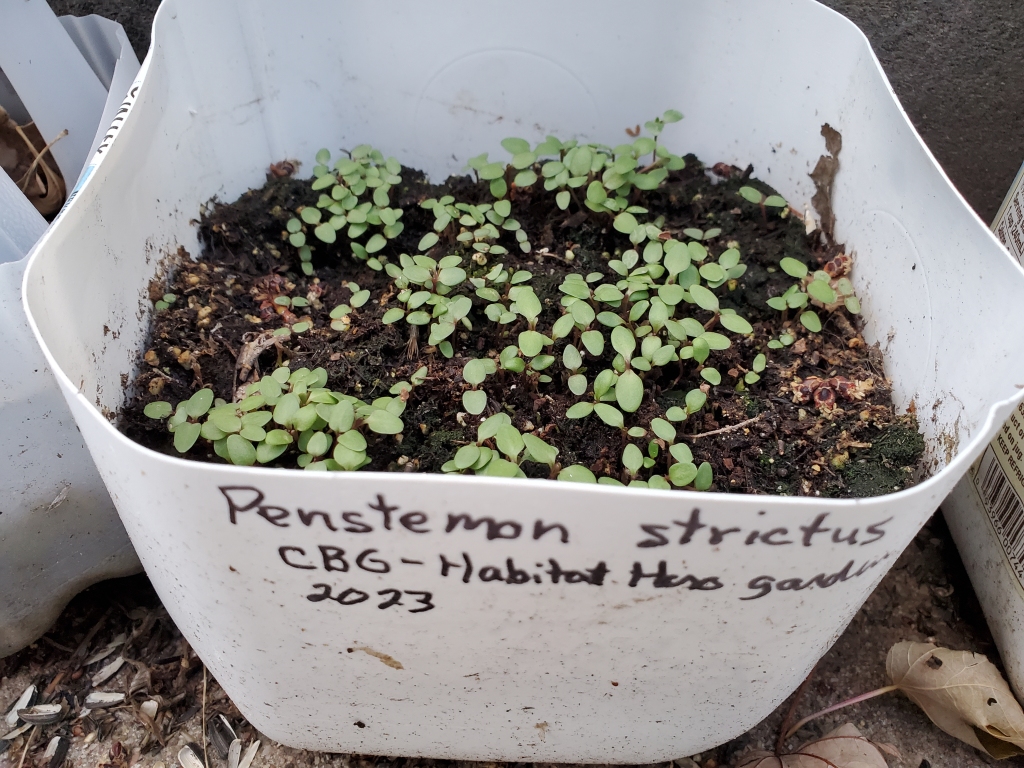
Rocky Mountain Penstemon seeds collected the previous fall have a high germination rate. Photo by Barb Gorges.
Transplanting winter sowing
[See also https://cheyennegardengossip.wordpress.com/2024/01/27/winter-sowing-magic.]
This is the ninth year I’ve winter-sown seeds. I planted 30 milk jugs in February and left them in a partly shady spot. By mid-April, most of them showed seedlings (this year, three of the jugs seem to have dud seeds).
Since many of these jugs are going to the Laramie County Master Gardener plant sale May 11, I decided last week to move them to a sunnier spot so they will grow a little faster. But I’m leaving the tops of the jugs on to protect them from squirrels and drying winds. Frost is not a problem—these native perennial types have anti-freeze in their veins. However, letting the potting soil dry out will kill them. And so will leaving the lids on when it gets too hot.
With 16 or 25 (or 200 once, when I must have spilled a whole seed packet) of seedlings in one jug, I’ve noticed that no matter how late into June I leave them, the seedlings never grow much beyond a couple sets of leaves. But their roots circle round and round.
I transplant winter sown seedlings mid to late May, either into a little protected nursery space I have in my garden, or into 2.5-inch pots so they get a little size to them before transplanting into the garden proper by the end of June or early July. I leave flats of those pots on our sunny patio where they are easy to check on every day and water when needed. I also set up hail guards over them. Mark built ours and they look like coffee tables with tops of hardware cloth (wire screening with openings the diameter of pencils) instead of wood.
But before I can put anything new in the little nursery plot, I have to dig up the 1-year-old plants and plant them right away, or pot them in potting soil until I can take them where they are going.
I believe in bare root planting. I try to keep potting soil out of my garden. Plus, this way I don’t need a big hole, so I just plunge my hand trowel into the bed, give it a little wiggle back and forth, making a slot to tuck a one-year-old plant’s roots into, then push some dirt in the slot, gently squeeze more dirt around the plant stem, water well and I’m done.
There is a trick to getting winter sown seedlings out of milk jugs. Take the top off. Water so soil is moist but not sopping wet. Spread your left hand over the top of the seedlings—or thread your fingers through the seedlings if they are taller than the top edge of the bottom half of the jug. Tip the whole thing over onto your hand and, shaking a little, use your right hand to remove the jug bottom. Then quickly tip the “brownie” (as Michelle Bohanan calls it) right side up into your right hand.
If the roots are well-grown, the brownie does not crumble in your hand. But if it does, let it crumble into the bottom half of the jug and lay your seedlings in there with some loose potting soil over their roots while they wait for you to get them planted. Try to handle seedlings only by their leaves and roots—not their stems.
A well-formed brownie, however, can be gently divided/pulled in half. I hold it upright in my two hands, thumbs on top, with my fingers on the underside teasing away potting soil along the halfway mark while I gently “fold” it in half, green sprouts towards each other, then reverse fold to potting soil brown sides towards each other a few times, while pulling my hands apart. With patience, you should be able to avoid ripping any roots.
Then break each brownie half in half again, and again. While I work my way down, I put the waiting pieces of brownie back in the jug bottom to keep them moist. Finally, I’m down to a little piece of potting soil and maybe 3 or 5 individual plants and I can just shake the potting soil off and plant them. I do save the potting soil—but I spread it out in the sunshine to disinfect and dry completely for a few days, for use only with hardier mature plants—not picky vegetable seedlings prone to damping off.
The bare root method can work for larger plants, though some that have been in a large pot for a long time might form a thick net of roots and it might not be worth trying to get them bare because they could be easily damaged as you try to work your fingers into the dense root mass.

This native pasqueflower was purchased from High Plains Environmental Center and bloomed this year in my native plant garden a couple weeks ahead of the wild plants up at Curt Gowdy State Park. I also grow the European pasqueflower, a much leafier plant, in my herb garden. Photo by Barb Gorges.
Editing
I don’t have much of an overall garden design because, the front garden especially, has slowly been enlarged year by year as Mark removes a shovelful of turf and I pop in a new plant I want to try.
Or I change my mind. Years ago, the Conservation District was giving away seed packets that included great bee-friendly plants, but some were prolific non-natives. I’ve been pulling those out. On the other hand, after taking several years to get going, the milkweed seems intent on crowding everything else out. Time to dig some of it up and share it.
Weeds are of course the biggest editing challenge. The front garden seems to have spontaneously erupted with small clumps of bluegrass that are easy to pull when the soil is moist.
For annual weeds, remember that Nancy Loomis showed us the best technique is to remove the above ground growth to kill them without disturbing the soil and inadvertently giving more weed seeds the daylight they need to sprout.
Removing greenery from perennial weeds like bindweed and thistle can starve them eventually, but you almost need to keep after them every other day—not feasible for a large infestation.
Good luck this season!



